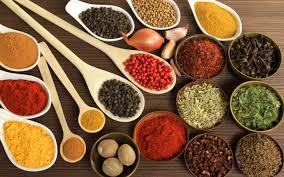 For years spices have been used by holistic practitioners, but now mainstream health professionals are using the power of spices as a weapon against illness. There is a scientific basis for why people have been using spices medicinally for thousands of years.
For years spices have been used by holistic practitioners, but now mainstream health professionals are using the power of spices as a weapon against illness. There is a scientific basis for why people have been using spices medicinally for thousands of years.
Here are 5 spices that can be used to minimize symptoms and treat health problems.
Sage – Preliminary research suggests that sage may improve some symptoms of early Alzheimer’s disease by preventing a key enzyme from destroying acetylcholine, a brain chemical involved in memory. Due to its high antioxidant capacity, sage can help protect the body’s cells from damage caused by free radicals, which often results in chronic disease.
Turmeric – Turmeric is used for its potential healing properties. The active ingredient, curcurmin, has been extensively tested and studied and the research shows the outstanding results for inhibiting tumor cell growth and suppressing enzymes that activate carcinogens. Curcumin, a compound in turmeric has potent antioxidant and anti-inflammatory properties, with studies showing it has anti-inflammatory, antiviral, antibacterial, antifungal and anticancer property.
Cinnamon – Research at the Mayo Clinic, is showing that cinnamon may help manage diabetes. The studies show that diabetics who take cinnamon supplements demonstrate better glucose control, possibly due to increased insulin activity. The evidence shows that it may help to regulate blood sugar and insulin, and perhaps lipids.
Black Pepper – Derived from the peppercorn, black pepper is both an antibiotic and an antioxidant. It stimulates fat breakdown, which may aid in weight loss, and some research shows that the spice may help lower levels of “bad” LDL cholesterol and triglycerides in the blood while increasing levels of “good” HDL cholesterol.
Black pepper has a high amount of piperine: and this main alkaloid from black pepper has been shown to substantially increase the bio-availability of the nutrients in foods and supplements. As the quality of food declines it is increasingly important to your health that the nutrients you consume are able to be used to maximum efficiency by your body.
Paprika – The paprika plant is from the same family as chilli. Paprika is high in antioxidants, including betacarotene, capsanthin, quercetin and luteolin. Paprika has antibacterial properties that help naturally control bacteria such as Salmonella and E. coli. Paprika is high in antioxidants because it is rich in vitamins A and E and can help to neutralize free radicals and their destructive effects on the body. Paprika also has anti-inflammatory properties.
As with all medical information, please consult your doctor or health care practitioner before starting a new health routine.




